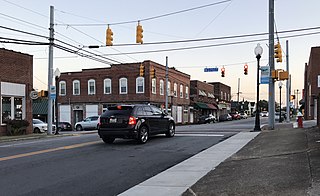
The United States is a highly developed neoliberal mixed-market economy. It is the world's largest economy by nominal GDP, and the second-largest by purchasing power parity (PPP) behind China. It has the world's seventh-highest per capita GDP (nominal) and the eighth-highest per capita GDP (PPP) as of 2022. U.S. accounted for 15.5% of global economy in 2022 in PPP terms, and around 24.7% in nominal terms in 2022. Its firms are at or near the forefront in technological advances, especially in computers, pharmaceuticals, and medical, aerospace, and military equipment. The U.S. dollar is the currency of record most used in international transactions and is the world's foremost reserve currency, backed by the nation’s massive economy, stable government, extensive natural resources, highly advanced military, its role as the reference standard for the petrodollar system, and its linked eurodollar and large U.S. treasuries market. Several countries use it as their official currency and in others it is the de facto currency. The largest U.S. trading partners are China, the European Union, Canada, Mexico, India, Japan, South Korea, the United Kingdom, and Taiwan. The U.S. is the world's largest importer and second-largest exporter. It has free trade agreements with several countries, including the USMCA, Australia, South Korea, Switzerland, Israel and several others that are in effect or under negotiation.

The United States had an official estimated resident population of 333,287,557 on July 1, 2022, according to the U.S. Census Bureau. This figure includes the 50 states and the District of Columbia but excludes the population of five unincorporated U.S. territories as well as several minor island possessions. The United States is the third most populous country in the world. The Census Bureau showed a population increase of 0.4% for the twelve-month period ending in July 2022, below the world average annual rate of 0.9%. The total fertility rate in the United States estimated for 2021 is 1.664 children per woman, which is below the replacement fertility rate of approximately 2.1.

Madison County is a county located in the U.S. state of Arkansas. As of the 2020 census, the population was 16,521. The county seat is Huntsville. The county was formed on September 30, 1836, and named for Madison County, Alabama, the home of some early settlers. They also named the county seat after Madison County in Alabama's county seat, Huntsville.

Madison is a town in Carroll County, New Hampshire, United States. The population was 2,565 at the 2020 census. Madison includes the village of Silver Lake and the village district of Eidelweiss.

Mayodan is a town in Rockingham County, North Carolina, in the United States. It is a manufacturing site for Sturm, Ruger & Co., Bridgestone Aircraft Tire, and General Tobacco. Washington Mills Company, later Tultex, operated a textile mill in Mayodan until 1999.

Fitchburg is a city in Dane County, Wisconsin, United States. The population was 29,609 at the 2020 census. Fitchburg is a suburb of Madison and is part of the Madison Metropolitan Statistical Area. Fitchburg consists of a mix of suburban neighborhoods closer to the border with the city of Madison, commercial and industrial properties, and more rural properties in the southern portion of the city. Despite its status as an incorporated city, some rural parts of Fitchburg still lack certain municipal services such as sewer, water, and natural gas.

The poverty threshold, poverty limit, poverty line or breadline is the minimum level of income deemed adequate in a particular country. The poverty line is usually calculated by estimating the total cost of one year's worth of necessities for the average adult. The cost of housing, such as the rent for an apartment, usually makes up the largest proportion of this estimate, so economists track the real estate market and other housing cost indicators as a major influence on the poverty line. Individual factors are often used to account for various circumstances, such as whether one is a parent, elderly, a child, married, etc. The poverty threshold may be adjusted annually. In practice, like the definition of poverty, the official or common understanding of the poverty line is significantly higher in developed countries than in developing countries.

The working poor are working people whose incomes fall below a given poverty line due to low-income jobs and low familial household income. These are people who spend at least 27 weeks in a year working or looking for employment, but remain under the poverty threshold.

Household income is an economic standard that can be applied to one household, or aggregated across a large group such as a county, city, or the whole country. It is commonly used by the United States government and private institutions to describe a household's economic status or to track economic trends in the US.

Income in the United States is measured by the various federal agencies including the Internal Revenue Service, Bureau of Labor Statistics, US Department of Commerce, and the US Census Bureau. Additionally, various agencies, including the Congressional Budget Office compile reports on income statistics. The primary classifications are by household or individual. The top quintile in personal income in 2019 was $103,012. The differences between household and personal income are considerable, since 61% of households now have two or more income earners.
Affluence refers to an individual's or household's economical and financial advantage in comparison to others. It may be assessed through either income or wealth.
The terms average Joe, ordinary Joe, Joe Sixpack, Joe Lunchbucket, Joe Snuffy, Joe Blow, Joe Schmoe and ordinary Jane, average Jane, and plain Jane, are used primarily in North America to refer to a completely average person, typically an average American. It can be used both to give the image of a hypothetical "completely average person" or to describe an existing person. Parallel terms in other languages for local equivalents exist worldwide.

In the United States, poverty has both social and political implications. In 2020, there were 37.2 million people in poverty. Some of the many causes include income inequality, inflation, unemployment, debt traps and poor education. The vast majority of people living in poverty are less educated and end up in a state of unemployment; higher incarceration rates have also been observed. Although the US is a relatively wealthy country by international standards, poverty has consistently been present throughout the United States, along with efforts to alleviate it, from New Deal-era legislation during the Great Depression, to the national war on poverty in the 1960s and poverty alleviation efforts during the 2008 Great Recession.
For statistical purposes, the United States Census Bureau uses a set of annual income levels, the poverty thresholds, slightly different from the federal poverty guidelines. As with the poverty guidelines, they represent a federal government estimate of the point below which a household of a given size has pre-tax cash income insufficient to meet minimal food and other basic needs.

The Lewisburg Area School District is a small, rural/suburban public school district in Union County, Pennsylvania. The district encompasses an area of approximately 44.5 square miles (115 km2). It serves the borough of Lewisburg, Kelly Township, East Buffalo Township and Union Township. By 2010, the district's population had increased to 19,173 people. According to 2000 US Census Bureau data, it served a resident population of 17,279. The educational attainment levels for the Lewisburg Area School District population were 88% high school graduates and 34% college graduates. The district is one of the 500 public school districts of Pennsylvania.
Melissa Schettini Kearney is the Neil Moskowitz Professor of Economics at the University of Maryland, College Park and a research associate at the National Bureau of Economic Research (NBER). She is also director of the Aspen Economic Strategy Group; a non-resident Senior Fellow at The Brookings Institution; a scholar affiliate and member of the board of the Notre Dame Wilson-Sheehan Lab for Economic Opportunities (LEO); and a scholar affiliate of the MIT Abdul Jameel Poverty Action Lab (J-PAL). She has been an editorial board member of the American Economic Journal: Economic Policy since 2019 and of the Journal of Economic Literature since 2017. Kearney served as director of the Hamilton Project at Brookings from 2013 to 2015 and as co-chair of the JPAL State and Local Innovation Initiative from 2015 to 2018.
Barbara Wolfe is an economist and the Richard A. Easterlin Professor of Economics, Population Health Sciences, and Public Affairs at the University of Wisconsin–Madison.
The United States federal child tax credit (CTC) is a partially-refundable tax credit for parents with dependent children. It provides $2,000 in tax relief per qualifying child, with up to $1,400 of that refundable. In 2021, following the passage of the American Rescue Plan Act of 2021, it was temporarily raised to $3,600 per child under the age of 6 and $3,000 per child between the ages of 6 and 17; it was also made fully-refundable and half was paid out as monthly benefits. The CTC is scheduled to revert to a $1,000 credit after 2025.












